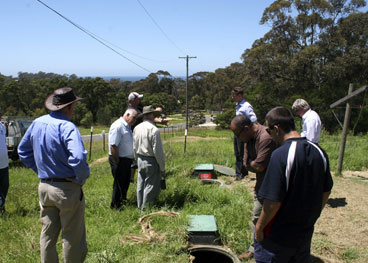
11 November, 2009
Meeting signals first steps towards water and sewerage improvements for Wallaga Lakes.
11 November 2009
A meeting of key stakeholders yesterday in the Aboriginal Community of Wallaga Lakes on the NSW South Coast has signalled the first steps towards long awaited improvements in the water and sewerage services for its residents.
The meeting between the Merrimans Local Aboriginal Land Council, the NSW Office of Water, NSW Department of Aboriginal Affairs and the Bega Valley Shire Council is part of the Aboriginal Communities Water and Sewerage Program - a joint $200m partnership between the NSW Aboriginal Land Council (NSWALC) and the NSW Government to improve water and sewerage services in eligible Aboriginal communities across NSW.
In welcoming the first steps towards improving the water and sewerage services for the residents of Wallaga Lakes, Jack Hampton, NSWALC's elected Councillor for the South Coast Region, said that the importance of the program cannot be under estimated.
"Access to clean drinking water and repairs and upgrades to proper sewerage systems are vital to ensuring the improved health and living conditions for Aboriginal people in NSW.
"The Aboriginal Communities Water and Sewerage Program is one of the most significant initiatives in the history of NSWALC and land rights in NSW."
"By putting in $100 million of our own money into the joint program over the next 25 years we are investing in future health of our communities and a better future for our people."
According to John Bourke, Program Manager, Aboriginal Communities Water and Sewerage Program for the NSW Office of Water, the work that will be done in Wallaga Lakes typifies the aims of objectives of the overall program.
"Yesterday's preliminary site visits suggest some of the problems currently experienced in Wallaga Lakes can be improved by on-going operation and maintenance routines of the water flow and the sewerage systems."
"For example, the installation of an electronic monitoring system on the tanks that supply water to the community will warn us when the water supply reaches critical levels."
In early 2010, the 60 discrete Aboriginal communities identified under the
Aboriginal Communities Water and Sewerage Program will have been visited and their needs assessed.
Backlog works, routine operation and maintenance have been carried out in 13 communities are now getting better water and sewerage services than when the program started.

